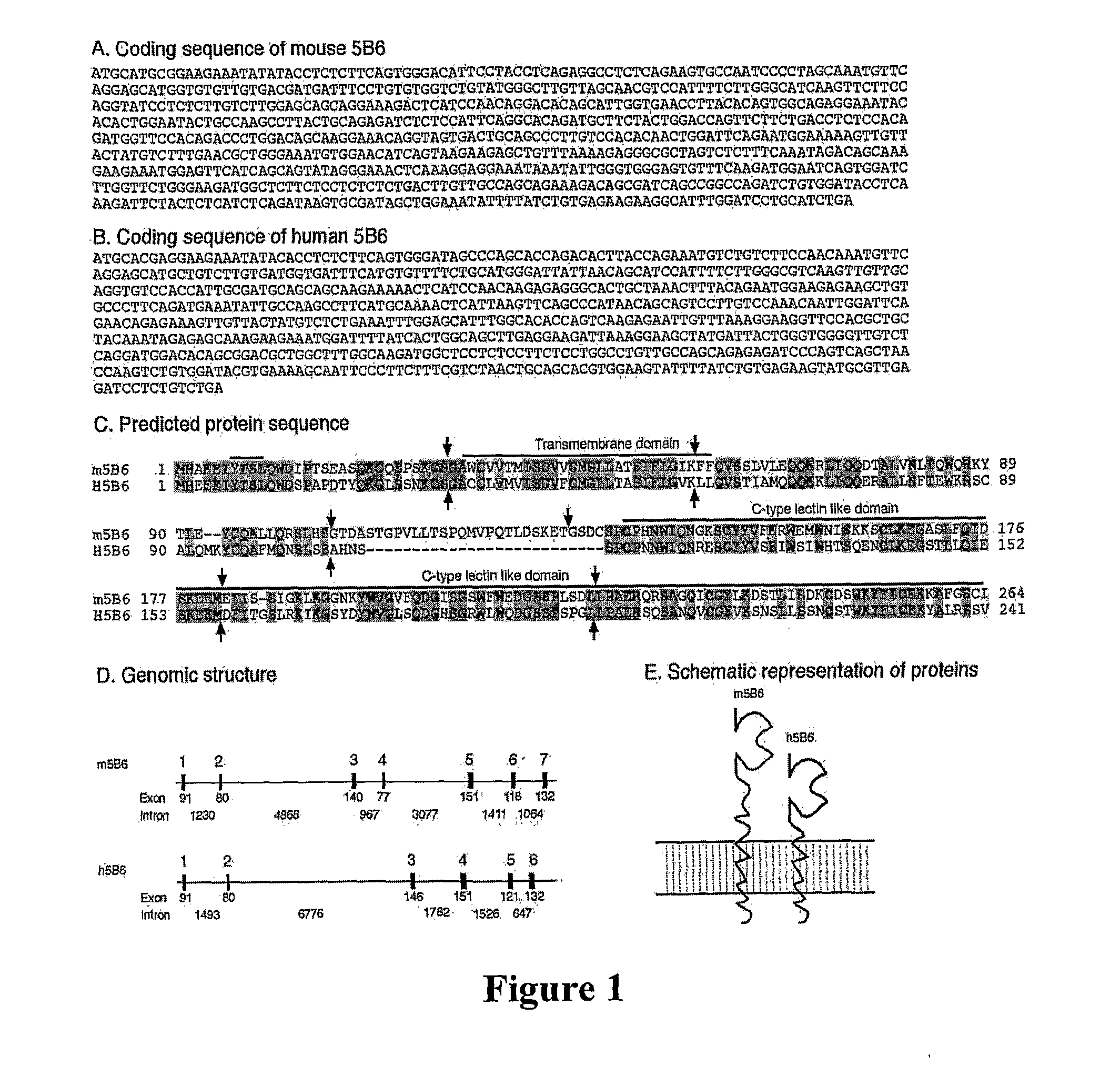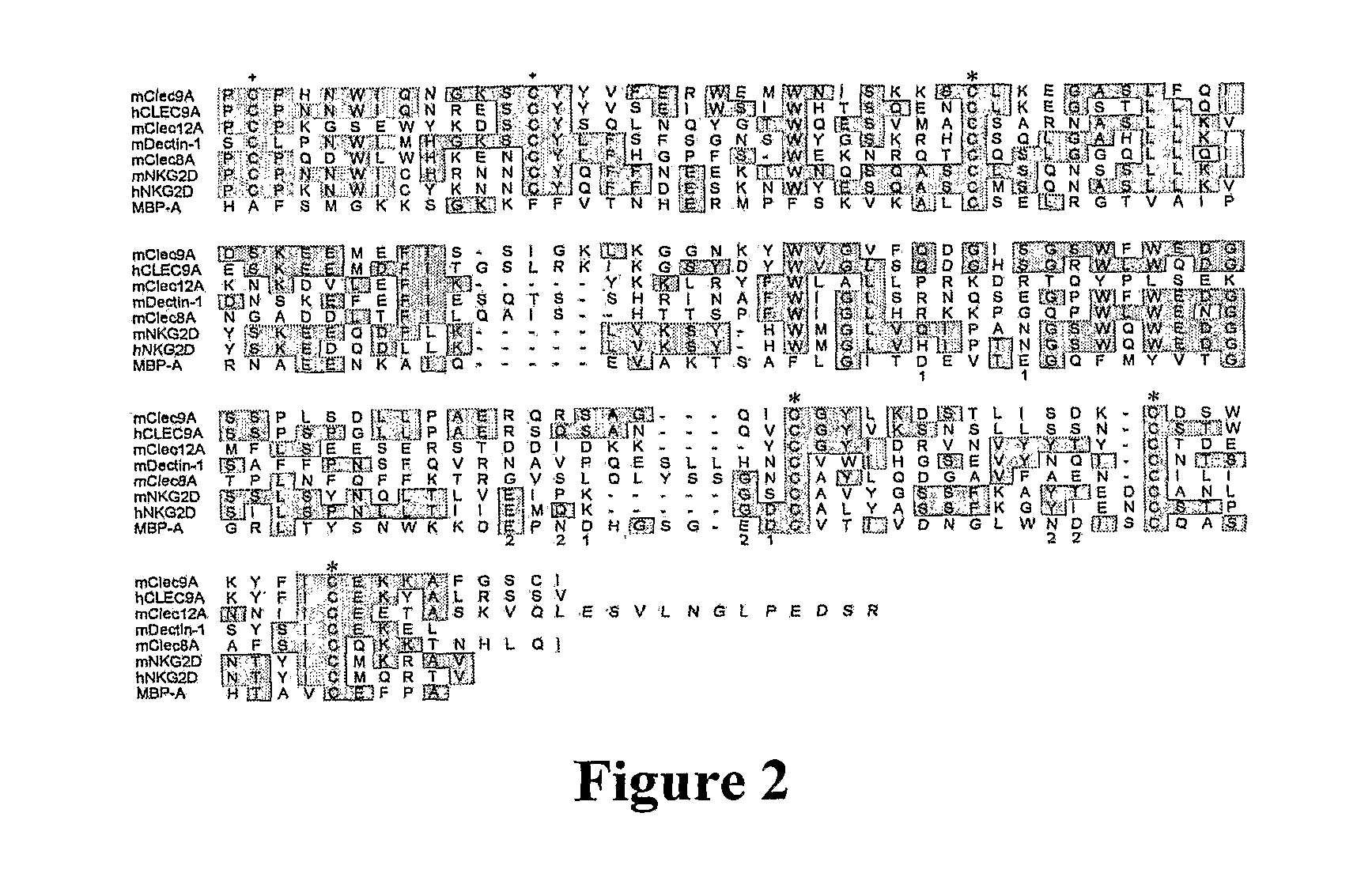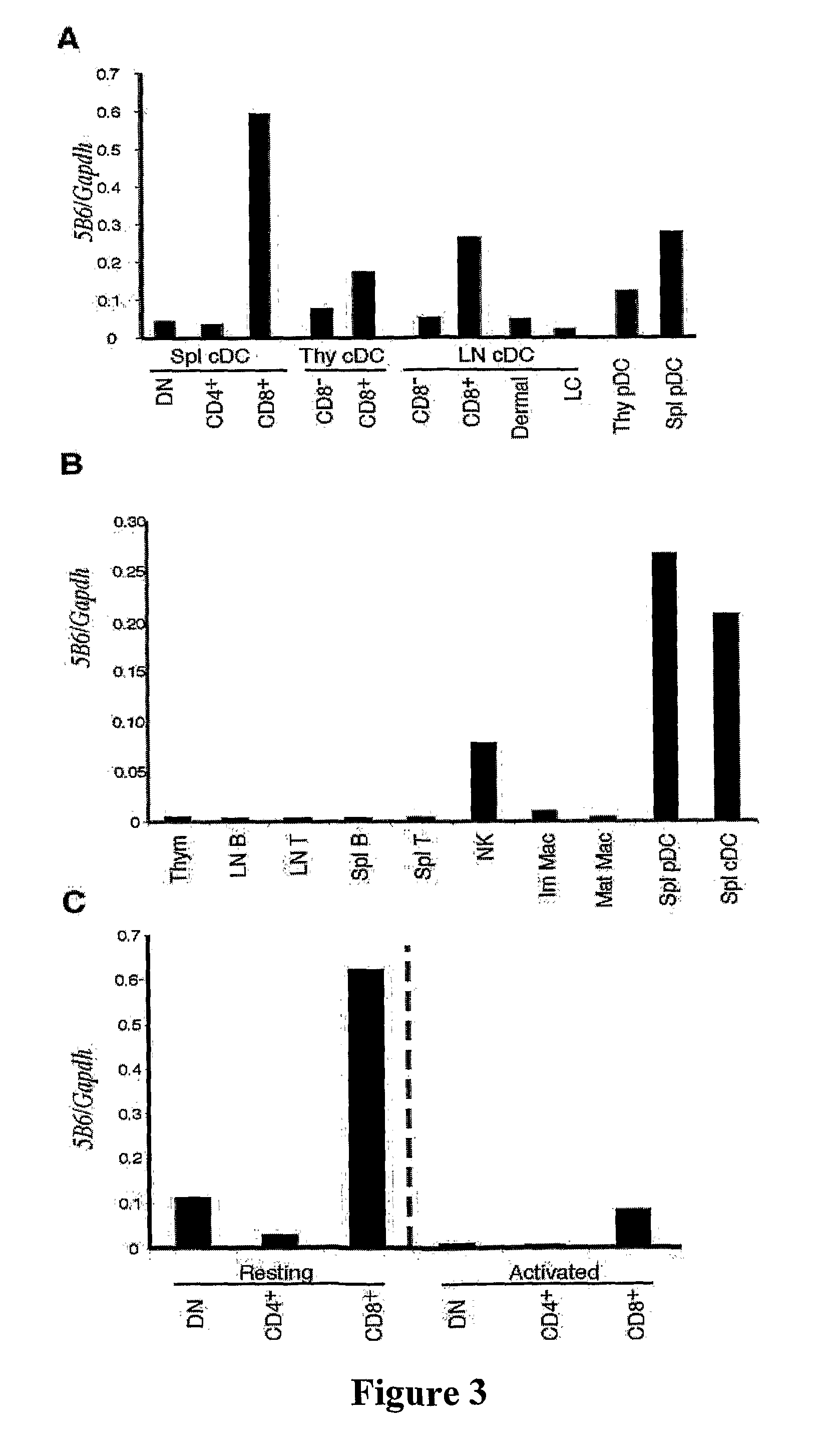Methods of Detecting Cells with a Disrupted Cell Membrane, Cells Infected with A Pathogen, Dying Cells or Dead Cells
a cell membrane and cell technology, applied in the field of methods of detecting cells with a disrupted cell membrane, cells infected with a pathogen, dying cells or dead cells, can solve the problems of dc subtypes that are conserved between mice and humans, and the definition of dc subtype-specific markers is a major challenge, and the selective expression of dc subtypes' dead cell uptake receptors is an important issue. , to achieve the effect of antigen recognition
- Summary
- Abstract
- Description
- Claims
- Application Information
AI Technical Summary
Benefits of technology
Problems solved by technology
Method used
Image
Examples
example 1
Cloning and Expression of 5B6
Materials and Methods
Mice
[0365]Mice were bred under specific pathogen free conditions at The Walter and Eliza Hall Institute (WEHI). Female mice were used at 6-12 weeks of age; alternatively, gender aged-matched cohorts were generated. Animals were handled according to the guidelines of the National Health and Medical Research Council of Australia. Experimental procedures were approved by the Animal Ethics Committee, WEHI.
Sequence Identification of 5B6
[0366]Sequencing was performed using the Big Dye Terminator version 3.1 (Applied Biosystems, Victoria, Australia) and 200 ng plasmid DNA, and subjected to electrophoresis on an ABI 3730x1 96-capillary automated DNA sequencer.
[0367]Comparison of sequences to the expressed sequence tag, cDNA and protein databases was performed by basic local alignment search tool (BLAST) using National Center for Biotechnology Information (www.ncbi.nlm.nih.gov). Genomic localisation was performed by BLAST alignment to the mou...
example 2
5B6 Ligand Expressed by Dying and Dead Cells
Materials and Methods
[0392]Throughout this Example 5B6 is referred to as Clec9A.
Mice
[0393]Female C57BL / 6J Wehi mice, 8-12 weeks of age, were bred under specific pathogen free conditions at The Walter and Eliza Hall Institute (WEHI). Animals were handled according to the guidelines of the National Health and Medical Research Council of Australia. Experimental procedures were approved by the Institutional Animal Ethics Committee, WEHI.
Recombinant Expression of Soluble Clec9A
[0394]Two versions of soluble Clec9A were generated, a full Clec9A ectodomain (Clec9A-ecto; stalk and CTLD), and a Clec9A CTLD only (Clec9A-CTLD). Soluble ectodomain mouse Clec9A is provided as SEQ ID NO:40, soluble ectodomain human Clec9A is provided as SEQ ID NO:41, soluble CTLD only mouse Clec9A is provided as SEQ ID NO:42, and soluble CTLD only human Clec9A is provided as SEQ ID NO:43.
[0395]cDNA containing the required ectodomain region was amplified from ...
example 3
Identification of the m5B6 Ligand
[0412]CD8+DC ingest dead cells more efficiently than other DC types (Iyoda et al., 2002). m5B6, expressed on CD8+ DC, specifically binds dead cells, but not early stage apoptotic cells. Molecules used by CD8+ DC to differentiate between early stage apoptotic cells and necrotic cells are of prime importance because uptake of early stage apoptotic cells by DC induces tolerance, but uptake of necrotic cells induces immunity (Sauter et al., 2000). Thus differential recognition of these states by receptors on DC is crucial to the immune system. Importantly, only CD8+ DC are capable of inducing efficient CD8 T cell responses to exogenous Ag (Belz et al., 2004).
[0413]Some related C-type lectins have had their ligands identified, and some have multiple ligands (eg. LOX-1 / Clec8a, Dectin-1 / Clec7a). The identity of 5B6 ligand(s) will be determined using a panel of immunochemical and proteomic techniques.
[0414]In a first approach, cells will be metabolically lab...
PUM
 Login to View More
Login to View More Abstract
Description
Claims
Application Information
 Login to View More
Login to View More - R&D
- Intellectual Property
- Life Sciences
- Materials
- Tech Scout
- Unparalleled Data Quality
- Higher Quality Content
- 60% Fewer Hallucinations
Browse by: Latest US Patents, China's latest patents, Technical Efficacy Thesaurus, Application Domain, Technology Topic, Popular Technical Reports.
© 2025 PatSnap. All rights reserved.Legal|Privacy policy|Modern Slavery Act Transparency Statement|Sitemap|About US| Contact US: help@patsnap.com



